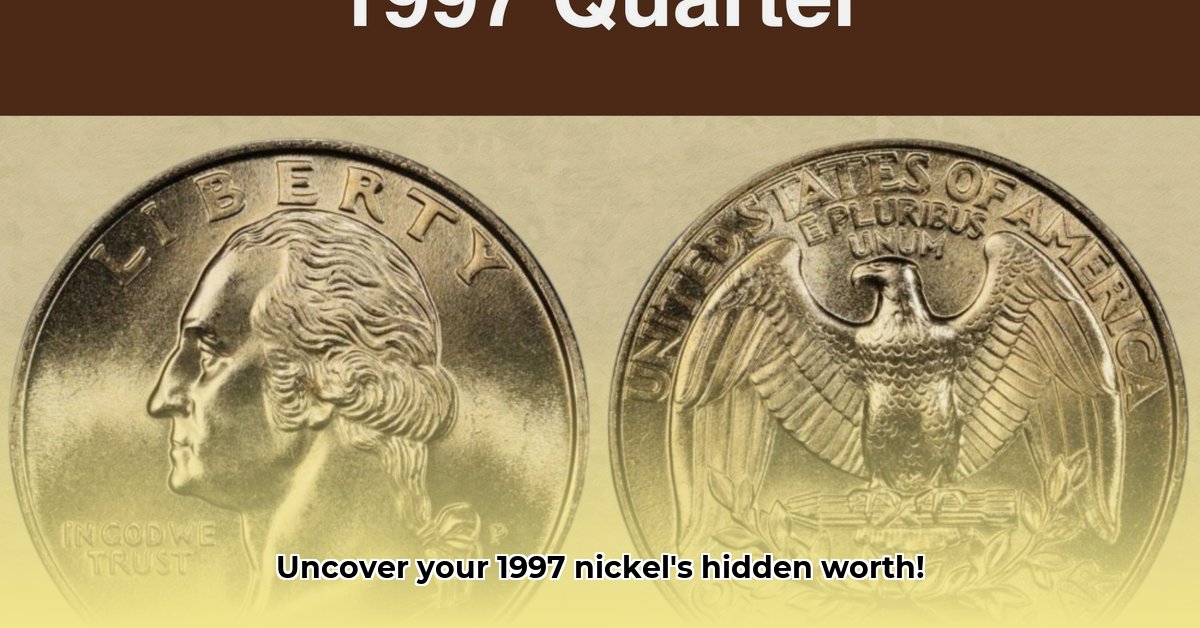
Unlocking the potential value of your 1997-D Jefferson nickel requires understanding several key factors. This guide provides a step-by-step approach to assessing its condition and estimating its worth, empowering both novice and experienced collectors.
Understanding What Influences the Value of Your 1997-D Nickel
The value of your 1997-D Jefferson nickel isn't simply a fixed number; it's a dynamic figure influenced by several intertwined factors. Think of it like assessing the value of a used car – age, condition, and market demand all play a role.
First and foremost is the coin's condition. A pristine, uncirculated nickel is far more valuable than one showing significant wear. We'll explore the Sheldon grading scale shortly to help you objectively assess condition.
Secondly, the inherent melt value matters. This refers to the value of the nickel's metal content (primarily copper and nickel) if melted down. While relatively low for a single nickel, it forms the baseline value. Fluctuations in metal prices directly impact this baseline. A graph illustrating nickel price fluctuations over time would be helpful here (graph not included per request).
Finally, market forces—supply and demand—significantly influence price. A rare variant or a coin in high demand among collectors will command a premium. Economic trends also subtly affect the values of collectibles. Therefore, expect variations in prices from different sources.
Assessing the Condition of Your 1997-D Nickel: A Step-by-Step Approach
Accurately assessing your 1997-D nickel's condition is crucial for determining its value. We’ll use the widely-accepted Sheldon grading scale (a numerical system from 1 to 70) to objectively evaluate condition. Higher numbers indicate better condition and higher value.
Grading Your 1997-D Nickel:
Initial Inspection: Carefully examine the coin's surface for scratches, scuffs, dents, or any other blemishes. Even minor imperfections impact the grade.
Luster Check: Evaluate the coin's luster – its shine or reflective quality. A bright, original shine suggests a higher grade, while a dull appearance indicates significant wear.
Edge Assessment: Inspect the edges for nicks or damage. Imperfections here can lower the grade.
Detail Definition: Examine the sharpness and clarity of the design details (Jefferson's portrait, Monticello). Blurred or worn details indicate lower grade.
Visual Comparison: Use online resources and coin grading guides 1 to compare your coin's condition with examples of coins at various grades. This visual comparison will help you accurately place your coin on the Sheldon scale.
Decoding the Sheldon Grading Scale: A Simplified Guide
The Sheldon scale is the industry standard for coin grading. Here is a simplified overview:
| Grade | Description |
|---|---|
| Poor (P-1) | Heavily worn; most details unreadable. |
| Fair (FR-2) | Very worn; some major design elements visible. |
| Good (G-4) | Moderately worn; many details visible. |
| Very Good (VG-8) | Noticeable wear; most details still clear. |
| Fine (F-12) | Visible wear; most details sharp. |
| Very Fine (VF-20) | Light wear; most details very sharp. |
| Extremely Fine (XF-40) | Minimal wear; most details extremely sharp. |
| About Uncirculated (AU-50) | Very slight wear; appears nearly uncirculated. |
| Uncirculated (MS-60 to MS-70) | No wear; brilliant surfaces, perfect strike. |
Remember, subtle differences within each grade significantly affect the price. An MS-65 is worth considerably more than an MS-60.
Estimating the Value of Your 1997-D Nickel
After grading, you can estimate the value using online resources and coin price guides. However, treat these as estimates; prices fluctuate based on market conditions and the specific characteristics of your coin. Different sources will likely offer different valuations.
Did you know that user-submitted pricing on many online platforms can be unreliable?
The most accurate valuation comes from a professional grading service.
Professional Coin Grading: Adding Certainty and Value
Professional grading services like PCGS 1 or NGC provide objective assessments and certifications. This certification adds credibility, boosts market value, and offers a concrete value for insurance or resale.
Where to Buy, Sell, and Get Your Coins Graded
Many reputable coin dealers exist both online and in person. Always research and verify the legitimacy of any seller or grader before transacting.
Long-Term Investment Considerations
While not a guaranteed path to riches, a high-grade 1997-D nickel can be a worthwhile addition to a diversified coin collection. Monitor market trends and store your coins properly to protect your investment.
Risk Assessment for 1997-D Nickel Investments
Like any investment, coin collecting has risks:
| Risk Factor | Potential Impact | Mitigation Strategy |
|---|---|---|
| Counterfeits | Loss of investment | Purchase from reputable sources; professional grading. |
| Market Fluctuations | Value changes due to market forces | Diversify your collection; avoid hype-driven purchases. |
| Inaccurate Valuation | Overpaying or underselling | Professional grading provides the most accurate value. |
| Improper Storage | Damage to the coin, lowering its value | Store coins in appropriate protective cases. |
Remember, responsible investing requires research, patience, and a long-term perspective.
Conclusion
Determining the value of your 1997-D Jefferson nickel involves a careful assessment of its condition, understanding market forces, and potentially utilizing the services of professional coin graders. By following these steps, you can gain a clearer understanding of your coin's worth and make informed decisions.